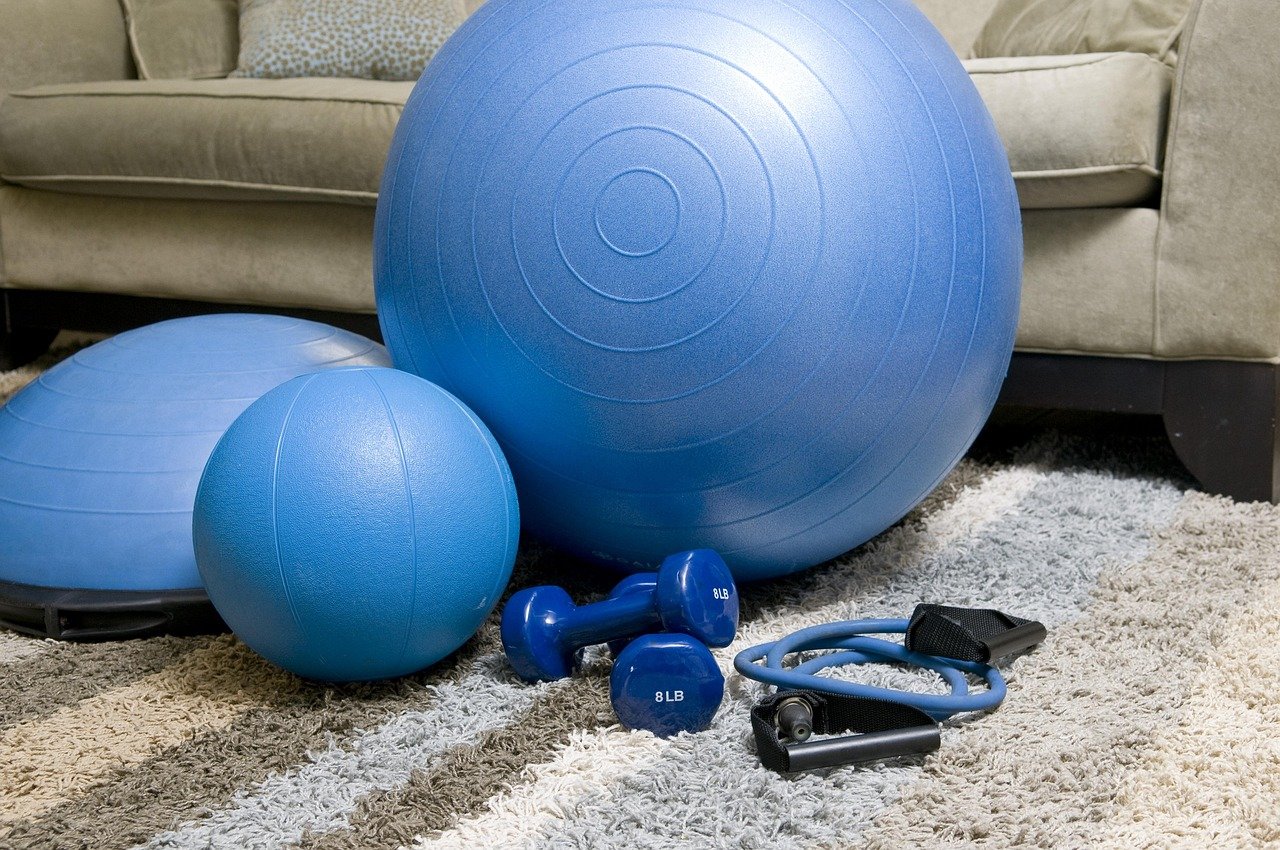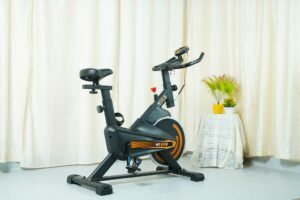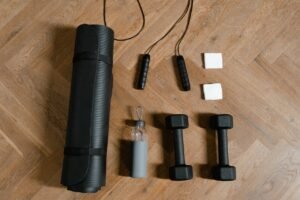When you think of building a home gym, your mind might go straight to dumbbells, resistance bands, or maybe a treadmill. But there’s one often-overlooked tool that brings balance—literally and figuratively—into your training: the balance ball.
Whether you’re recovering from an injury, trying to improve your posture, or simply looking to challenge your muscles in new ways, this versatile piece of equipment offers surprising benefits. In this guide, we’ll explore why adding a balance ball (like a BOSU ball or stability ball) to your home workouts can be a game changer.
Table of Contents
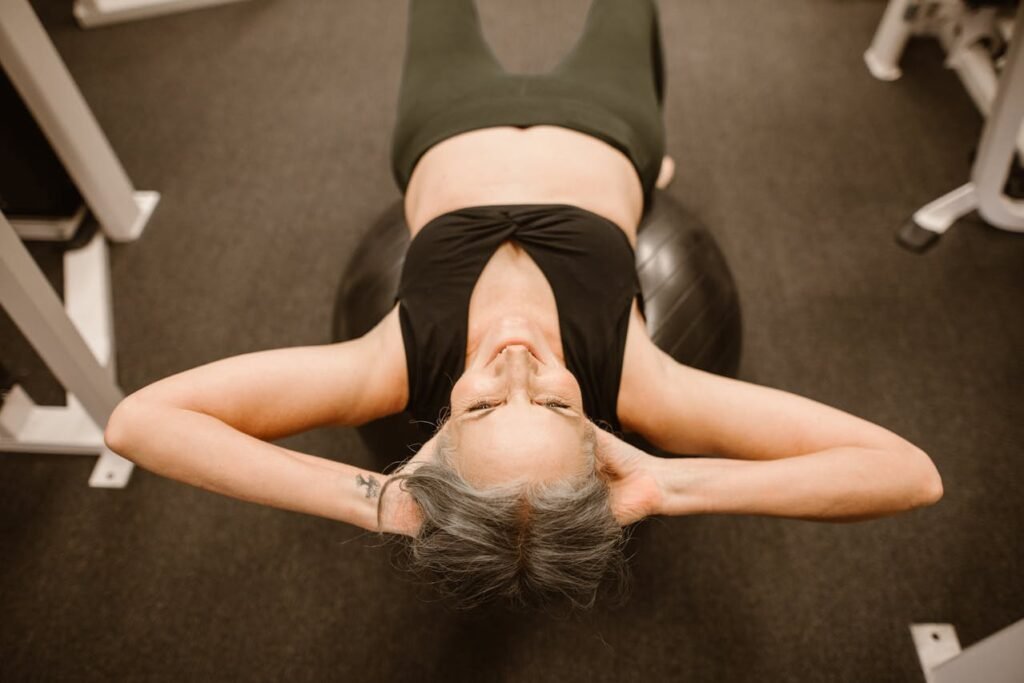
What Is a Balance Ball, Really?
It can refer to a few different types of equipment:
- BOSU Ball: Half of a stability ball mounted on a flat platform. “BOSU” stands for “Both Sides Up,” meaning you can use either the flat or dome side depending on the exercise.
- Stability Ball: A full inflatable exercise ball often used for core training, stretching, or balance drills.
- Balance Trainers: This includes wobble boards or other unstable surfaces used for proprioceptive training.
In this article, we’ll focus primarily on the BOSU-style ball and how it can improve strength, stability, and injury prevention—especially in a home gym setting.
Core Benefits of Training with a Bosu Ball
1. Improved Stability and Balance
The most obvious benefit is in the name: balance. Performing exercises on an unstable surface activates your core and stabilizing muscles more deeply than traditional movements. A 4-week study on dynamic surface training found that using a BOSU ball significantly improved ankle strength and dynamic postural control.
Even basic movements like standing on the ball’s dome side can train your neuromuscular system. Over time, this improves your coordination and proprioception (your body’s sense of spatial awareness), both of which play a key role in everyday movements like walking, bending, or reaching.
Pro Tip: Beginners can start by holding onto a wall or using a cane while standing on the dome to build foundational balance.
2. Better Muscle Engagement
While traditional strength training is effective, using a Bosu ball can help activate muscles in a different way—especially smaller stabilizers that often go undertrained.
For example, a squat on a BOSU ball doesn’t just work your quads and glutes. It also forces your core, ankles, and even foot muscles to work harder to maintain stability. The result? Stronger contractions, increased muscle recruitment, and more well-rounded development.
This doesn’t mean Bosu ball training replaces heavy lifting. If you’re already advanced and lifting significant weight, you may not see the same hypertrophy benefits from balance work alone. But for beginners or those focused on general fitness, it’s an excellent way to build functional strength.
If you’re interested in developing core strength and stability with other versatile tools, you might also enjoy this post on medicine balls. They’re great for dynamic strength work and pair well with balance training.
3. Flexibility and Range of Motion Gains
While it may sound counterintuitive, instability training can actually improve flexibility—not by increasing range of motion during the exercise, but by strengthening the muscles and joints that support deeper stretching over time.
In other words, Bosu ball workouts don’t stretch you more, but they help you move better. That makes your stretching or yoga practice more effective in the long run.
4. Cardiovascular Conditioning and Calorie Burn
Bosu ball training isn’t just for slow, controlled movements. You can crank up the intensity with exercises like jump squats, jump lunges, burpees, and mountain climbers on the ball. These elevate your heart rate, improve endurance, and promote fat loss.
Plus, doing these movements on an unstable surface makes your muscles work harder than they would on flat ground, giving you a better return on time invested.
Pro Tip: Try combining yoga poses with the balance ball to engage more muscle groups and increase your overall calorie burn.
5. Injury Prevention and Rehab
Bosu ball exercises are commonly used in physical therapy settings to help patients recover from ankle sprains, ACL injuries, or hip problems. The reason is simple: they help retrain the body to handle uneven surfaces, strengthen stabilizers, and improve joint integrity.
For home users, incorporating balance training can reduce your risk of injury during everyday activities, especially as you age.
Some exercises to try for injury prevention:
- One-leg balance holds
- Deadlifts on the flat side
- T-stabilizations
- Step-overs and lateral movements
- Ball toss while balancing
Common Drawbacks (and How to Avoid Them)
1. Limited for Heavy Strength Training
If you’re already doing high-volume barbell work, a balance ball might not offer the same strength gains. Because you can’t load as heavily on an unstable surface, the muscle growth potential for advanced lifters is lower.
Solution: Use the Bosu ball as a supplement, not a replacement, to your heavy compound lifts.
2. Cost and Durability
High-quality BOSU balls can range from $120 to $200. While cheaper models exist, they often lack durability and grip. You may also need a pump or replacement parts over time.
Solution: Consider it a long-term investment, especially if balance or rehab is a priority in your fitness goals.
- Versatile Full-Body Workout: Combines cardio, strength, and flexibility exercises in one tool to target your entire body…
- Strengthens Muscles: The 26-inch balance ball forces your core to engage and stabilize, effectively building strength, s…
- Enhances Balance & Coordination: Challenges your balance and proprioception, improving coordination, posture, and physic…
Disclosure: We may earn a commission from links mentioned in this post, at no extra cost to you. We only recommend products we genuinely trust
3. Risk of Misuse or Injury
While the Bosu ball reduces injury risk when used properly, beginners can hurt themselves by rushing into advanced movements or using improper form. Twisted ankles and strained backs are common when balance training is done without proper progression.
Solution: Start slow. Stand on the ball. Then progress to two-leg squats. Later, try single-leg balances, and finally introduce light resistance or throws. Always listen to your body.
Balance and the Nervous System
Beyond muscle and joint benefits, balance training has a deep connection to the nervous system. Your body responds to instability by activating protective reflexes—tense muscles, held breath, raised shoulders. By practicing balance in controlled environments, you train your body to relax, adapt, and stabilize more naturally.
This translates into less tension, better breathing, and more efficient movement patterns in everyday life.
In essence, training balance trains your entire neuromuscular system—not just your muscles.
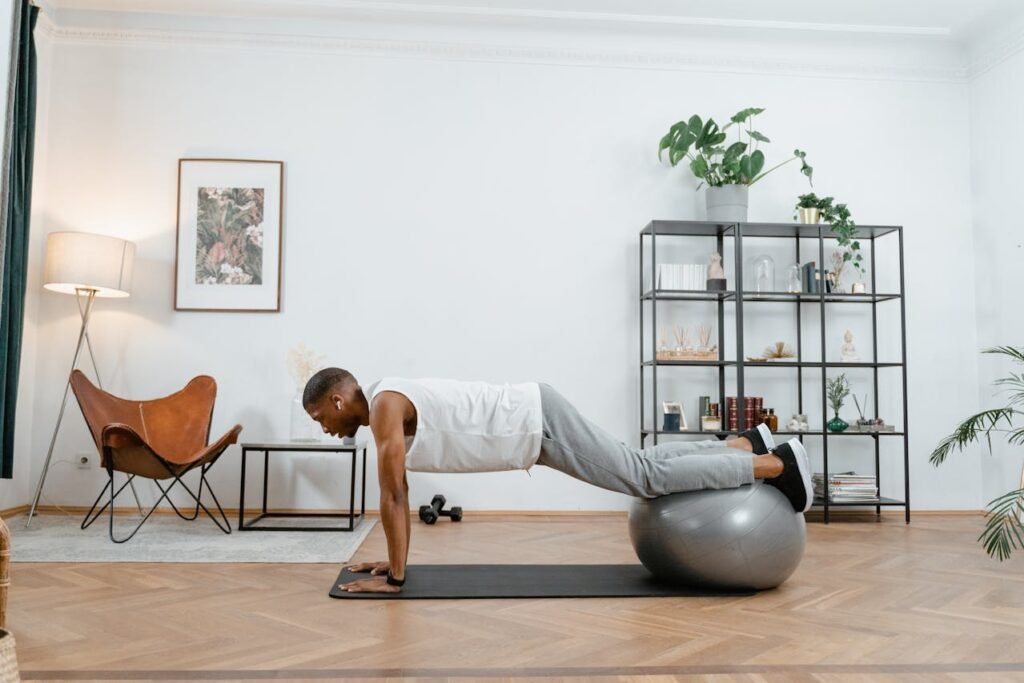
Real-World Applications for Home Fitness
Incorporating a Bosu ball into your home routine doesn’t require fancy programming. Here’s a simple weekly progression:
Beginner Home Circuit (No Weights):
- 30 sec balance hold (both feet)
- 30 sec bodyweight squat on dome
- 30 sec seated core twist
- 20 jump lunges (feet on ground, hands on ball)
- 30 sec push-up hold (hands on flat side)
Intermediate:
- One-leg balance holds
- Squats with resistance band
- Bicycle crunches on dome
- Mountain climbers on dome
- Side plank with feet on ball
Advanced:
- Single-leg deadlift (flat side up)
- Jump squats on dome
- Explosive push-ups on dome
- Ball toss in 90° rotations
- One-leg reach-and-pickup drills
These exercises take up little space, require minimal equipment, and can be tailored to your fitness level.
Final Thoughts
Balance training might not be flashy, but it’s foundational. Whether you’re an athlete recovering from injury, a beginner trying to feel stronger, or someone simply looking to move more confidently at home, the Bosu ball can be a powerful tool.
It challenges your body in ways traditional equipment can’t—by targeting coordination, joint strength, and full-body control. When used wisely, it becomes more than just a piece of gear—it becomes a gateway to better movement, better posture, and better performance.
Recommended Gear for Getting Started
If you’re planning to add balance work to your home routine, having the right equipment can make a big difference. Here are a few tools that complement stability training well:
- Resistance Bands – Great for adding tension to squats, lunges, or upper body movements.
- Non-Slip Workout Mat – Adds stability and cushioning for movements on hard floors.
- Adjustable Dumbbells – Perfect for combining strength training with balance exercises.
These aren’t required, but they can enhance your workouts and help you progress safely at home.


